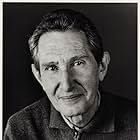Ajouter une intrigue dans votre langueIn the mid-fifties, El Nini lives in the poorest and most forgotten rural Castile (Spain). He is a child with no more knowledge than those provided by nature. El Nini lives with his father i... Tout lireIn the mid-fifties, El Nini lives in the poorest and most forgotten rural Castile (Spain). He is a child with no more knowledge than those provided by nature. El Nini lives with his father in a cave, and with him he devotes himself to the hunting of water rats, the only means of ... Tout lireIn the mid-fifties, El Nini lives in the poorest and most forgotten rural Castile (Spain). He is a child with no more knowledge than those provided by nature. El Nini lives with his father in a cave, and with him he devotes himself to the hunting of water rats, the only means of subsistence they know. But when they are tried to deprive them of their roof and their liv... Tout lire
- Director
- Writers
- Stars
- Prix
- 2 nominations au total
Photos
- José Luis
- (as Luis Pérezagua)
Avis en vedette
The ending of the film was bizarre to say the least; did it really ask itself to be taken seriously? Everything (except the action) would seem to suggest that it did, and yet the final few moments were accompanied by howls of laughter from the audience.
There are hundreds of problems with the movie (indeed my friend said she thought it was one of the worst films she had ever seen), and I think that the move never quite transcends these problems. The pace is too slow, the secondary characters are never quite developed, the plotline just too divorced from modern, urban city life that most of us live in to make sense. Yet despite all of these, the film does have certain things to recommend it. For example, the nature photography is fantastic, and the way the film captures the nature of the seasons through the village is breathtakingly beautiful.
Las Ratas is lyrical and poetical about the countryside that the action is set in, and it works very well. The main characters are somewhat bizarre, but they are well rounded, so bizareness is not really a problem.
Several scenes in the film are extremely graphic (indeed the opening of the film carries a warning that it should not be seen by anyone under thirteen (Spanish censorship laws being less strict than their counterparts in the USA or UK)), and I admit to finding myself wincing at the gorier parts: for this is life in the country, accompanied by birth, death and slaughter. (This is not a film to watch if you like pigs). Yet the camerawork always maintains its reverence for wildlife, and the position of man amongst all of this is probably only questioned at the end.
This is a very literary film: if you are watching it without subtitles (as I was), you may find that you follow only the visual action, and very little of the dialogue, save very few repeated phrases.
Perhaps I had a harder time than most with this film because I did not understand a lot of the dialogue. Perhaps it would work a lot better with subtitles. Perhaps it would work better if I lived in the countryside. Perhaps all of these are true. But I really cannot see myself watching Las Ratas again to find out.
This is a passable but downbeat film , but in difficult vision , and realized in ¨Mario Camus' Los santos Inocentes¨ style also written by Miguel Delibes . There is a sour critique to rural life during Francisco Franco time in the 50s . It is a thought-provoking and lyrical drama with interesting character studio of a few roles . It is an acceptable and touching film , but strong , including hard scenes as the pig slaughter and other disturbing as well as violent scenes . It results in a strange blending between fiction and documentary , regarding a hardship existence at a starking region and the difficulties to survival .The main and unknown cast gives a decent acting , in spite of no being professional actors , giving an excessively theatrical performance . Support cast is pretty well , such as : Susi Sanchez , Paco Algora , Jose Conde and Joaquin Hinojosa . It was written by Miguel Delibes , he was editor chief in Norte De Castilla newspapers , where he attempted to publicize news about rural life but it was prohibited by the Francoist censorship, then he wrote the novel Las Ratas , one of the strongest books .
Being well photographed by Teo Escamilla , producer too, he is considered to be one of the best Spanish cameramen . Shot on location in Carrion de los Condes , Valdecabañas de Cerrato , Palencia and other villages of Valladolid province from the Castilian Comunidad Autónoma. The motion picture was uneven but professionally directed by Antonio Giménez Rico . Antonio is good craftsman who has written and directed several films from the sixties. He is a fine filmmaker of great quality . He was born in Burgos , Castilla y Leon ,where he often shoots his pictures . His film debut was Mañana de domingo 1966 , following El hueso 1967 , El Crónicon 1970 , Al fin solos 1977 , Del amor y la muerte 1977 and a documentary about travestism titled Vestido de azul. This nice director being specially known for Jarrapellejos 1988, Tres palabras 1993 with Maribel Verdu , and Hotel Danubio 2oo3 a remake to classy Los Peces Rojos . His speciality results to be adaptations based on the prestigious novelist Miguel Delibes as Retrato de Familia 1976 based on Novel titled Mi idolatrado hijo Sisi , The vote of Míster Cayo based on the homonymous novel and The Rats . He also directed various episodes of notorious TV series as Plinio, Crónicas de un pueblo , La máscara negra and Página de sucesos . Rating 6/10 . Acceptable and passable . The picture will appeal to Spanish cinema aficionados .
But neither the book nor the film exist simply to horrify modern easy-living cinema-goers; Miguel Delibes, one of the three best and most respected novelists in Spain today, who also participated in writing the script, writes about his native Castilia, the cradle of Spanish civilisation, but always as a rural writer. His novels reflect the kind of people who lived in those small towns and little villages scattered around the high plateaux of the interior of Spain, far from the noisy mobs of tourists; his novels reflect their fears, loves, beliefs, senses of honour and loyalty, and of course the ever-present distrust and envy.
If, then, you try to watch the film under these precepts, appreciating each scene almost as a little story in itself, as an isolated experience, through which runs loosely a thread which vaguely connects the whole work, you will probably accept the film for what it is: a brilliantly carried out adaptation, beautifully filmed by Teo Escamilla in the province of Palencia. Some of the scenes of houses and streets were a bit out of place as a lot of cement laying and new roofs have been laid since 1956. However, you can see the wide open spaces around such villages as Valdecabañas de Cerrato, to the east of Palencia. José Cáride and Álvaro Monje in the central rôles play convincing parts: the stubborn old father who refuses to abandon his cave, and El Nini who interprets nature and the weather for the villagers, who ably assist them in their lesser parts in the film.
This is not a film which starts in one place and finishes in another; it is not even a film which goes through a logical series of actions; `Las Ratas' only depicts a series of rural sequences, peopled by peasants: simply a visual poem through which a discerning cinema-goer may just glimpse and capture a little of what mid-fifties life was like in Spain.
However, I fear that for many people including modern Spanish audiences who shun their own past, preferring to park it conveniently outside their selective memories this film may prove to be somewhat inexplicable, incomprehensible. You may also like to see my notes in `La Lengua de las Mariposas' (1999).
Meilleurs choix
Détails
Contribuer à cette page








